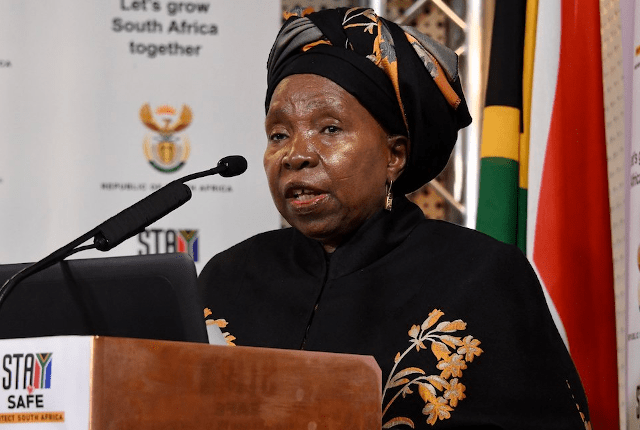
Minister of Cooperative Governance and Traditional Affairs (Cogta) Nkosazana Dlamini-Zuma says that government is working on the roll-out of its new District Development Model (DDM).
In a presentation on Tuesday (8 September), Dlamini-Zuma said that over the past 20 years, local government has not adequately fulfilled its role, especially as it relates to economic development.
She added that the ‘pedestrian growth’ which the country has registered over the past decade was ‘simply not enough’ to ensure employment and income for a majority of people.
To address these and facilitate for better coordination and integration, government has adopted the new District Development Model (DDM).
“The DDM seeks to strengthen the local sphere of governance, moving us away from silo planning, budgeting and implementation,” she said.
Dlamini-Zuma said that the new model will provide for a ‘more tangible, common vision for development’ of the country. “By adopting a long term view and interconnecting the local economies we are able to re-imagine a better community, district and nation.”
She said that government further plans to locate each district’s competitive advantage and ‘utilise it for shared growth and prosperity’.
District hubs
To assist at a local government level, Dlamini-Zuma said that government plans to employ skilled people at ‘district hubs’ so that they may avail shared skills which local municipalities lack.
“The hubs form part of the district’s capacity and will link the localities to provinces and national departments,” she said. The hubs will also house critical and scarce skills such as engineers, planners, ICT specialists and administrators, to the districts and local municipalities.
Dlamini-Zuma said that these hubs are currently being trialled at three pilot sites across the country – Waterberg in Limpopo, eThekwini in KZN and OR Tambo in the Eastern Cape – which will impact over 10% of the population, the majority of whom are the poorest in our country.
The ownership and management structure of these economies are a microcosm of South Africa, she said.
“With the rich mineral and flora resources of Waterberg, the majority of the land is owned by a hand full of white males.
“Despite its captivating wild coast which is abundant with potential, only 15% of the people in OR Tambo are employed and the overwhelming majority of 65% live in poverty, the majority of whom are women who constitute 53% of the population.
“eThekwini displays the apartheid spatial planning patterns with the majority living far from work spending thus spending close to 20% of their income on transport, whereas the international norm is less than 10% of income.”
Dlamini-Zuma said government will therefore use the DDM to ‘reimagine the future’ of all 44 districts and the eight metros across the country, starting with profiling the localities.
“We have now completed the profiles of all the 52 districts. This means we are now at a point where we have a good understanding of the major development issues in all our districts.
“This was a critical step in the process of the implementation of the District Development Model because we now know what we need to do to improve the quality of the lives of our people,” she said.
Singular budget
Dlamini-Zuma said that the district-model will also see budget changes across government, with the ultimate goal of unifying finances into a singular budget.
The District Development Model will be implemented through the specialisation and reprioritisation of each and every department, state entity and municipality’s plans and budgets, she said.
“The ‘One Plan’ which will inform the ‘One Budget’ is an intergovernmental strategic framework for investment and delivery in relation to the district and metropolitan spaces,” she said.
“The District Development Model is all about how we work together as one government in all our district and metropolitan spaces, even if each sphere, sector or entity has its distinct, interrelated and interdependent constitutional powers, functions and responsibilities.
“In this case working together means planning, budgeting and implementing as one, while we hold each other accountable along the process.”
Read: R82 million Gauteng school built in waterlogged area deemed a ‘death trap’


